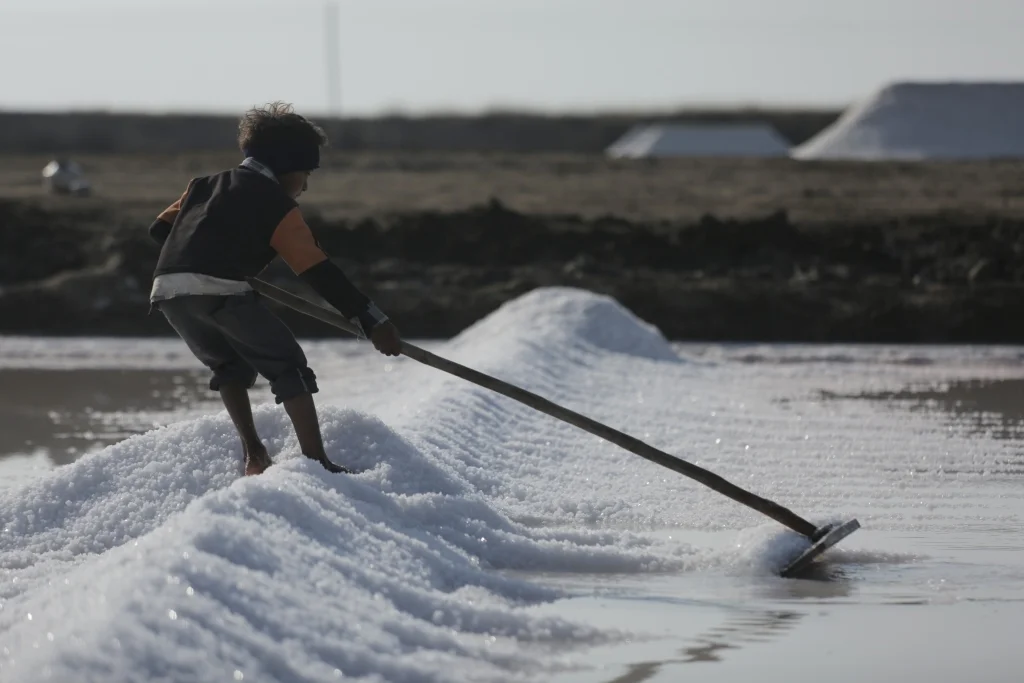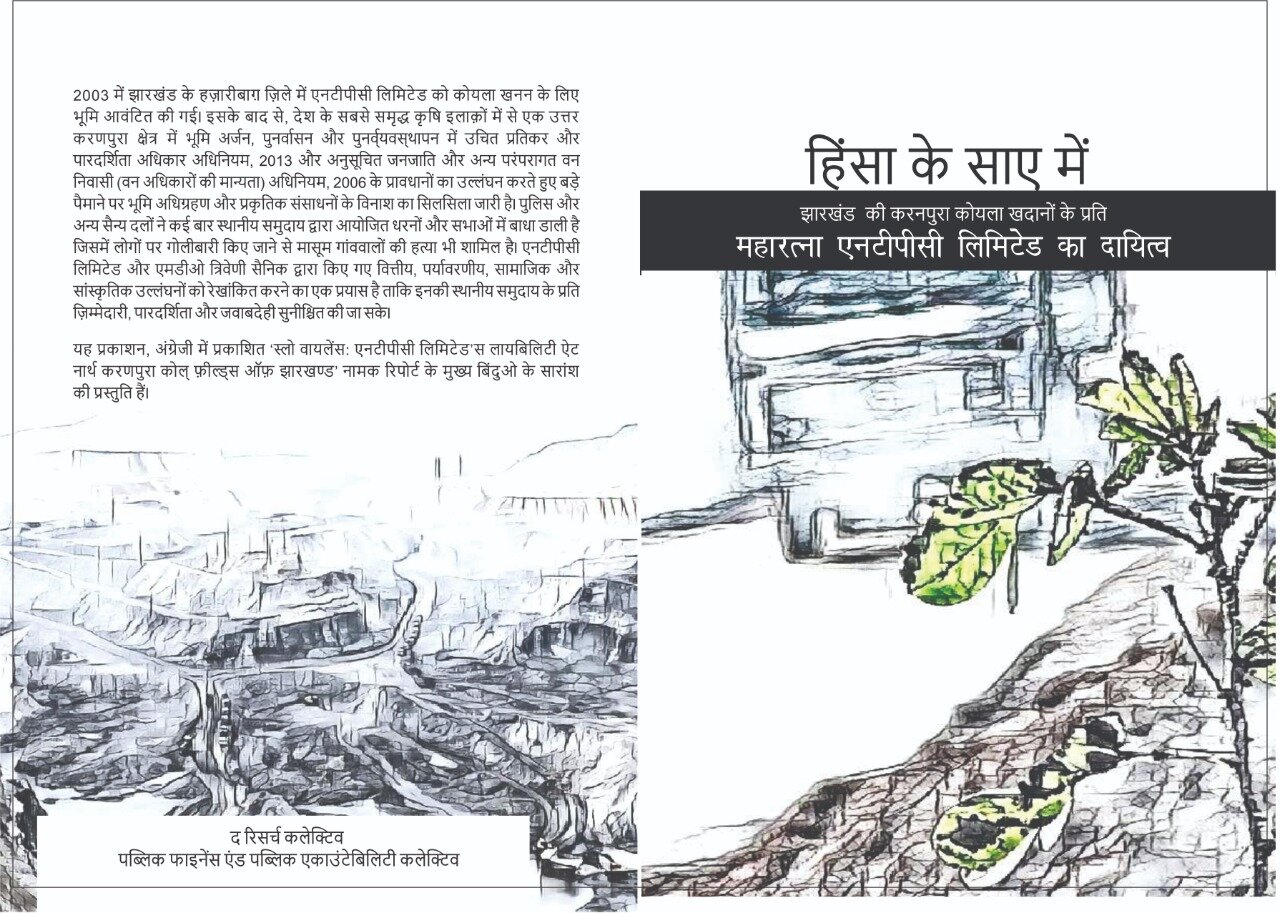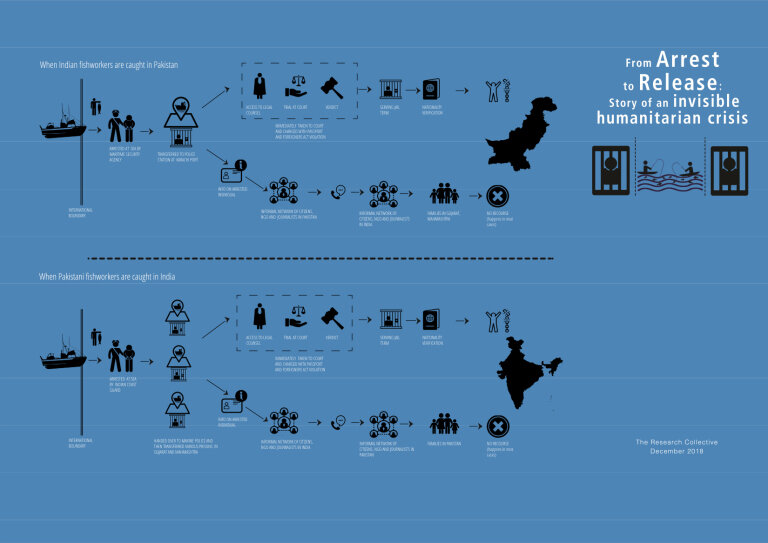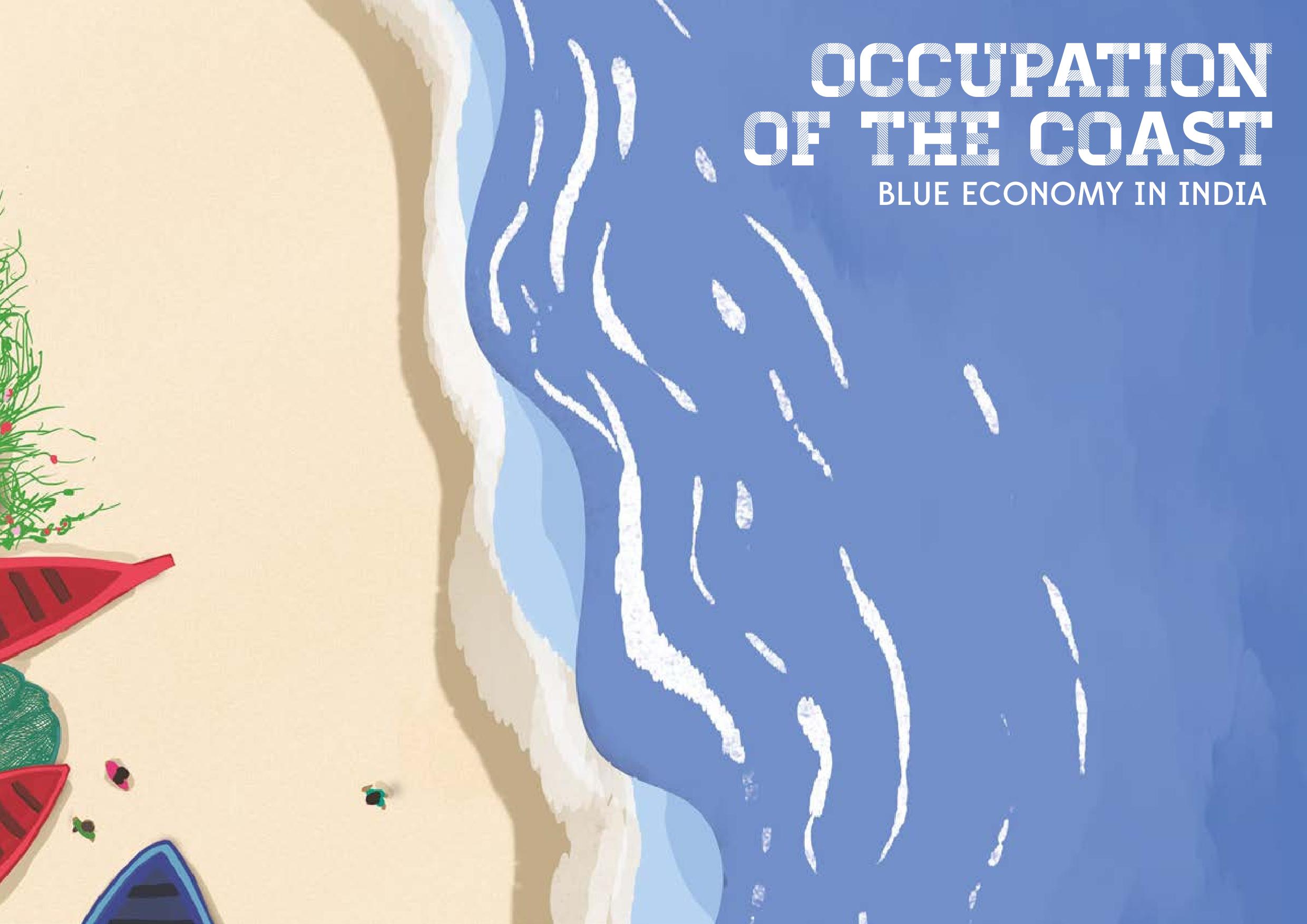30 x 30 - HOW DO WE SEE AND UNDERSTAND THE HIDDEN CONTOURS OF 30 x 30? ( 2023)
In December 2022, the framework for 30 by 30 which was conceptualized and negotiated by the Convention of Biological Diversity (CBD) was signed and declared in Montreal, Canada and it was released as the Kunming-Montreal Global Biodiversity Framework at the 15th meeting of the Conference of Parties to the UN.
In India, the government has also laid plans to fulfill the outcomes of 30 by 30. Announcements on 30 by 30 included having a balancing act between 30 by 30 and meeting the country’s developmental goals, green bonds to mobilize India’s own financial resources, and a refusal to cut farm-related subsidies.
This note examines the envisioned targets in the light of recent developments in the country.
Environment Laws in India: In the age of a Global Climate Crisis - A Dossier (2022)
In India, several changes have been introduced to environmental laws between the years 2019-2022. Several assessments have been made on the proposed changes and the effects it might have on the current environmental situation and at face value it seems they are influenced by a need by the Indian state to give easy access to companies for extracting natural resources. While this reason is integral towards explaining why these changes were introduced, influence by international mechanisms for fighting the climate crisis also needs to be taken into consideration.
It is with these concerns, a collection of articles has been compiled for researchers, activists, academicians, legal experts or anyone to get a bird’s eye view on the recent changes in the arena of environmental governance. These articles attempt to give the reader an understanding of how certain events unfolded, usually with an attempt to amend environmental laws and how it has or it will reverberate a series of irreversible damages.
मध्यप्रदेश में सिंचाई का सही आँकड़ा जानना कठिन (2022)
मध्यप्रदेश देश का ऐसा राज्य है जिसने सबसे तेज सिंचाई सुविधा उपलब्ध करवाने का दावा किया है। पिछले दशक में प्रदेश को खाद्यान्न उत्पादन की विभिन्न श्रेणियों में लगातार 7 बार कृषि कर्मण परस्कार भी मिले हैं। ऐसे में राज्य की छवि देश के अनाज के कटोरे के लिए में गढ़ी जा रही है।
हालांकि सरकारी सेवाओं के तटस्थ विश्लेषण के लिए आँकड़ों के संबंध में सरकारों का पारदर्शी रवैया बहुत जरूरी है। लेकिन, मध्यप्रदेश में सिंचाई संबंधी आँकड़ों की सार्वजनिक रूप से उपलब्धता न होने से इस पर सवाल हैं। नियंत्रक और महालेखा परीक्षक (सीएजी) ने भी अपनी जाँच में सिंचित क्षेत्र के सरकारी आँकड़ों को सच्चाई से परे पाया है। इसी संदर्भ में मध्यप्रदेश की सिंचाई क्षमता की पड़ताल करता यह लेख।
PRADHAN MANTRI MATSYA SAMPADA YOJNA - A Preliminary Analysis (2022)
The Pradhan Mantri Matsya Sampada Yojana (PMMSY) is a central government scheme focused to increase fish production and was launched when the country was grappling with Covid-induced lockdowns and economic shocks, at macro & micro levels. While the scheme officially lists 13 beneficiaries, the first being fishers, a basic analysis of the components and target groups of the scheme reveals that it is largely exclusionary in nature for the average Small Scale Fishworker (SSF)
The Making of Disaster Cyclones, Coastal Vulnerability and Community Resilience (2021)
This brief report is a compilation of discussion held during webinar
“The Making of Disaster: Cyclone, Coastal Vulnerability and Community Resilience” which is aimed to bring out the challenges faced by the coastal communities, pre and post climate disaster in India. Further, it deliberated on the extent and scope of government response in terms of policy, evacuation and effective role communities play during or after disaster in this era of intensifying climate change.
वनीकरण का सामाजिक और पर्यावरणीय प्रभाव: छत्तीसगढ़ और ओड़िशा के वन क्षत्रों से एक रिपोर्ट (2021)
Due to Technical reasons, we cannot upload the publication here. Kindly write to us at admin@psa-india.net for copies.
सदियों से वनाश्रित समुदाय स्वतंत्रतातापूर्वक वन संपदा का उपयोग अपनी आजीविका, निस्तारी और जीवन को मजबूत करने के लिए करते आये हैं। परंतु, पिछले चार दशकों से वन समुदायों की वन संपदा तक पहुंच अपेक्षाकृत कम हो गई हैं। कथित विकास के कई अवधारनाओ मे से सरकार के द्वारा किया जाने वाला वनरोपण एक बड़ा कारण हैं। इस तरह के कृत्रिम वृक्षारोपण, वन और वन मे रहने वाले समुदायों पर क्या प्रभाव पड़ रहा हैं? इन्ही पहलुयों को समझने के लिए ये अध्ययन किया गया हैं। यह अध्ययन ओड़ीशा और छत्तीसगढ़ के 10 गाँव मे किया हैं। इस प्रक्रिया मे यह भी एक कोशिश थी की समुदाय के लोगों की सोच, वन के साथ जुराव और उनके पारंपरिक ज्ञान को इस अध्ययन के माध्यम से सांझा कर पाएं |
The report titled ‘Slow Violence: NTPC Limited’s Liability at North Karanpura Coal fields of Jharkhand’ jointly brought out by The Research Collective and Public Finance Public Accountability Collective, Delhi, brings forth crucial findings about the financial, social, ecological and cultural violations that the company has bestowed upon people from the North Karanpura coal fields impacted area. It depicts how the Maharatna NTPC Ltd and its MDO Thriveni Sainik which has had little regard for the socio-economic and cultural- ecological fabric of the society they are operating in, caused rampant destruction on the lives and livelihoods of the populace of the mining area in Jharkhand.
Occupation of the Coast: II Infographics booklet is an attempt to create a speaking tool for communicating the complexities of shrimp production in the country. It brings together visual insights on the micro-scales of shrimp production by encompassing labour, ecology, caste, gender, livelihoods and the economy. Each infographic acts as a companion for the five papers in Occupation of the coast-II which highlights the specific relations of production, both vertically in terms of the production process and horizontally across landscapes. We hope the infographics are able to speak, sieve and communicate the existing problematised data on shrimp production and promise an attempt at a conflict-free transition to the Blue Economy in India.
Occupation of the Coast: II
The puzzle of shrimp production on the East coast of India (2020)
Occupation of the Coast-I was published for the World Forum of Fisher People General Assembly which was held in December 2017. The focus of the first edition was to provide an overview of the changes and challenges faced by coastal communities in general, and fishworkers specifically, with regards to the Blue Economy development framework in India. Building on our learnings from this and in order to update on specific trajectories of change, this second publication focuses on intensive shrimp aquaculture on the East Coast of India.Through contributions from academics and community members from three coastal states, Occupation of the Coast-II brings together insights on the micro-scales of shrimp production by encompassing labour, ecology, caste, gender, livelihoods and the economy. An open call was put out for submissions towards this publications.
Slow Violence: Maharatna NTPC Ltd’s Liability At north karanpura coal fields of jharkhand (2020)
In 2003, NTPC Ltd was allotted land in Hazaribag district of Jharkhand for coal mining. Since then, the North Karanpura area, one of the richest agricultural fields of the country has witnessed rampant land acquisition and destruction of natural resources violating the terms of Right to Fair Compensation and Transparency in Land Acquisition, Rehabilitation and Resettlement Act, 2013 and the Scheduled Tribes and Other Traditional Forest Dwellers (Recognition of Forest Rights Act) 2006. The administration has used the police forces to disrupt protests and meetings by the local community at various occasions including opening fire, resulting in the death of innocent villagers. This report is an attempt to bring forth financial, ecological, cultural and social violations done by NTPC Ltd and the MDO Thriveni Sainik highlighting the need to measure them on counts of transparency, accountability and responsibility.
FOREST governance, implementation of forest rights act and conservation (2019)
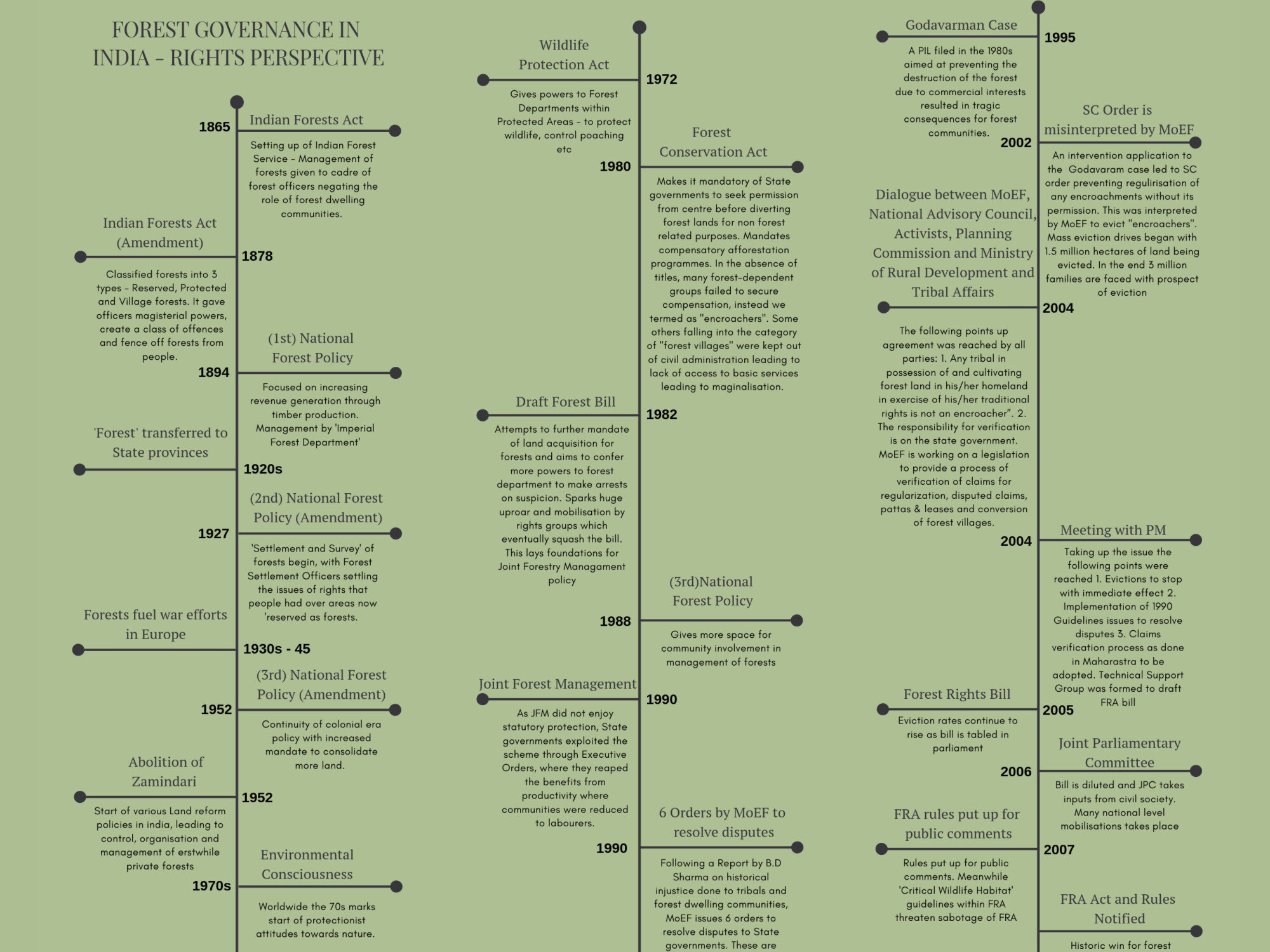
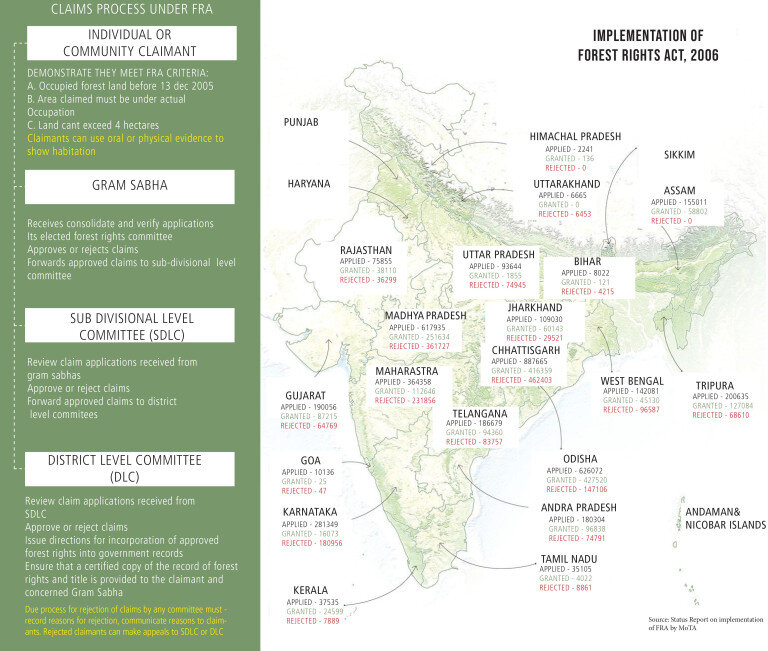
The forests in India have been a matter of significant debate and discussion where the issue of conservation is primary but there is no common understanding of what conservation stands for. Historically, the governance of the forest has been a contested issue.
The Scheduled Tribes and Other Traditional Forest Dwelling Communities (Recognition of Forests Rights) Act 2006 (hereinafter known as FRA) intended to correct the historical injustices perpetuated on the forest dependent indigenous community and clear the path for revisiting community led forest governance and conservation. But since the act came into effect, the provisions of the Act have been systematically undermined by the government and Forest Department. There has been poor implementation of the Act in several states, loopholes in the claim verification process and perceived conflicts with the other Acts governing the forest and wildlife. The Supreme Court order for the eviction of more than a million people dependent on the forest, in February 2019, has to be looked at in the context of the situation mentioned above.
In this context, it is needed that the arguments that brought the FRA 2006 into existence and the role of forest dwelling communities in conservation be revisited and discussed.
Please find here, an infographic on the FRA.
FROM ARREST TO RELEASE: STORY OF AN INVISIBLE HUMANITARIAN CRISIS (2018)
Ending the War at Sea: In Pursuit of Permanent Solutions to the India-Pakistan Fisheries conflict (2018)
The August of 2018 saw Pakistan release thirty Indian prisoners and India release fourteen Pakistani prisoners from their jails respectively; the gesture was rightly applauded by the media and citizens as an extension of an olive branch of peace, especially with the new Government in Pakistan. However, the fact that the majority of the Indian prisoners—twenty-six to be precise—are fshworkers and primarily from Gujarat and Diu, goes unnoticed. The conflict
between India and Pakistan is most often portrayed and imagined as one that takes place on land. The diplomatic turbulence brewing at sea for the last thirty years is not known to the average citizen of both countries. In fact, currently there are 103 Pakistani fshermen in Indian jails and 392 Indian fshermen in Pakistan jail. This raises many important questions of peace and security in the context of people, livelihoods, the environment and resources.
The arrests, prolonged jail-terms and in-custody deaths of the fsherpeople have given way to a humanitarian crisis. Those who manage to survive in these jails have to wait years to be released. The kind of insensitive charges, which were put on these arrested fshers, often led to their prolonged sentencing under Arms Act, Banned substances laws (Smuggling & Narcotics provisions), criminal trespassing, etc. made matters worse and mental trauma unmatched. Though the interventions in the past few years by civil society groups and the judiciary in India and Pakistan have brought some temporary relief, the fact remains that the fshworkers have been made prisoners of war, remains to be addressed. Added to it is the livelihood loss to fshers, with their captured boats, in hundreds, rotting in the other country’s custody. At the stage of prisoners release, they are packaged into political commodities or gifts by India and Pakistan to be bartered on special occasions. Ironically, within a week of the recent goodwill gesture, India arrested nine Pakistani fshworkers after they allegedly crossed over to the Indian side of International Maritime Boundary Line (IMBL) in the Arabian Sea! This situation begets many questions.
Why should Indian people care about AIIB? (2018)
The Asian Infrastructure Investment Bank (AIIB) is a new international bank set up by China in 2016. The bank lends money to governments and to the private sector for infrastructure projects. It is primarily focused on Asia, and its rules say that Asian members must hold at minimum 75% of the votes in the bank. But the bank also includes members from across the world including Europe, Latin America and Africa, although notably both the US and Japan have chosen not to join it. Asia, just like much of the Global South, has a large infrastructure gap. Many governments and inter-national development banks argue that huge investment in infrastructure is required for countries to develop and prosper. The Asian Development Bank (ADB) estimated in 2017 that the region needs to spend $1.7 trillion a year until 2030 to address the lack of infrastructure in Asia. The AIIB aims to focus specifically on this issue, funding infrastructure projects in the region, and beyond. The bank is also a political and economic project for China. It was initially set up as an alternative to the World Bank, IMF and other traditional International Financial Institutions (IFIs), as part of China’s attempt to become, and be recognized as, a world power. However so far the bank is not proving to be very different from the ADB, World Bank, etc. and does not seem to be much of a threat to them.
Overfishing Negotiations at the WTO: Undermining Fishworker Livelihoods (2018)
The Ministry of Commerce and Industry convened an informal international multi-ministerial meeting on the 19th and 20th of March, 2018 in New Delhi, India. This is a follow up to the December 2017 WTO meeting where negotiations stalled on the fisheries subsidies agenda. The stalemate was a result of India‘s priority to guarantee food and livelihood security, prompting much criticism from state and non-state actors.Unfortunately, what remained unheard were the voices of the lakhs of Indian fishworkers and their perspective on the impacts of the free-market led development trajectory of Indian fisheries.
As a response, The Research Collective compiled this position paper with the main aim to build context and a historical narration of fishworker struggles in India, with the hope to inform national and international debates on the subject of fisheries subsidies.
Visible Tiger; Invisible People - Study and Report Based on the Public Hearing held at Sundarban Islands, India (2017)
The Sundarban is one of the most unique forest regions in the world and is internationally recognised as an ecologically sensitive region. Criss-crossed by mighty estuarine rivers and a maze of innumerable creeks and tributaries, this is the largest mangrove forest and the only mangrove tiger land in the world. The forest spreads across India and Bangladesh of which the Indian part is situated in the state of West Bengal. The fact that it is the largest remaining natural habitat of the Royal Bengal Tiger furthers its prominence in the world.
‘Visible Tiger; Invisible People’ is a study and report that looks at the status of implementation of the Forest Rights Act 2006 in the Sundarban forest region in India. It raises critical issues and questions the current system of forest governance in the country.
It brings together the findings from the Public Hearing held at the Sundarban islands in 2016 by looking specifically at the situation of the fishworkers and forest workers in the region who are facing violations of their right to life and livelihood. It portrays the disconnect between the original ideas of forest conservation which focused on co-existence between humans, plants and animals and what is being done in reality by making areas inviolate under the garb of conservation
The Vizhinjam Report : Dream or Disaster- A Study of the Economic, Environmental & Social Impacts of the Port (2017)
The Vizhinjam International Deepwater Multipurpose Port was awarded to the sole bidder Adani Ports & SEZ in 2015 by the previous Congress-led UDF (United Democratic Front) government in Kerala, almost half a century after the project was first mooted1 and 20 years after the proceedings started in 1995. Touted by the government as a dream project and by many others as an economic disaster, the project has been mired in controversy and allegations of governmental misconduct. This report is an attempt to bring together the various issues surrounding the Vizhinjam port and critically evaluate the project for what it actually is, its true costs and benefits.
Where hAve the fish gone? - the impact of industrial development on fishworkers in Gujarat (2017)
Across the state of Gujarat, economic process put in motion since the ‘70s have impacted the fishing community and their livelihood. Based on fieldwork across the coast, the study, assesses the impacts of industrial development on the fishing community. It found that both industrial and fisheries policy, oriented towards export and global seafood regimes have had adverse impacts on coastal ecology and the fishing community.
Section One, focuses on the growth of industrialisation, current industrial patterns, the parallel changes in the demographic of the traditional fishing community and changing pattern of fisheries since the Eighties.
Section Two, is based on field work in four fishing villages of South Gujarat, one fishing harbour of the Saurashtra Coast and four fishing villages across the district of Kutch. It shows that large-scale pollution due to industrialisation has severely affected coastal ecology and degraded coastal areas. It has led to large-scale depletion of marine resources. The fishing community has been severely impacted – leading to their migration and displacement. Interviews also revealed changing livelihood patterns across the coast, changing access of the community to the commons, as well as the existing practices of debt bondge and militarisation in the Kutch region.
OccupatioN of the Coast - The BLue Economy in InDIA (2017)
The Blue Economy involves economic activity that engages with the various components of the oceans. Given the immensity (components and geographical scope) of the oceans, it is not surprising that a vast array of actors-state actors, transnational corporations, conservation organisations, philanthropic foundations, policy think-tanks etc.-locate themselves strategically in the framework to seize the opportunity the Blue Economy affords. As the Blue Economy gets underway, the publication titled ‘Occupation of the Coast – The Bue Economy in India’, supported by the National Fishworker Forum, re-visits various aspects of coastal development and weaves together a narrative of its impacts on the fishing communities.
The study is divided into three chapter. Chapter One studies the laws pertaining to the coastal lands and the ocean resources in tandem since they govern the space (land), the resource (ocean) and access (land to ocean) vital to the fishing communities. Chapter Two investigates current government policies and financial practices of the government’s current flagship programme, the Sagarmala Programme, followed by two two papers which explore the key thrust areas of the Sagarmala, Public-Private Partnership (PPP) port models through a analysis of the Vijhinjam Port Project and an analysis of the creation of 111 inland waterways.
Chapter Three, brings together a series of contributions on the environmental and livelihood aspects of the Blue Economy. Key issues tackled in this section are the changing role of women fishers in the fisheries sector, the legal and administrative framework of governing Marine Protected Areas in India, the introduction of Blue Carbon as a new solution to climate change, tourism policies in India and the growing concerns of militarisation and security, in context of the Andamans.
With contributions by independent researchers and organisations working on the respective issues, the report touches upon key challenges in both coastal and marine policies today. Some of the main issues that have been raised and the paper, to be written by the authors of the report, would articulate are, financialisation of natural resources, the changing nature of governance and policy regimes, the eradication of processes of consent and consultation with affected communities, and the increasing push towards privitisation and para statal bodies in infrastructure policy.
Unfolding Crisis: The Case of Rising NPAs and Sinking Public Accountability (2016)
Download Report- English and Hindi
The concept of institutionalized finance is a fairly complex issue whose nuances are often difficult to grasp. Keeping this in mind Unfolding Crisis seeks to demystify the NPA phenomenon by providing relevant facts, figures and trends to shed light on the factors leading to the crisis and also propose counter measures, which will ensure both the non-occurrence of such a situation and improve transparency and public accountability in the banking sector.
The Reserve Bank of India (RBI) in its Financial Stability Report published in June 2016 had projected that the gross NPA rate of the banking sector could increase to 8.5% of the total advances. Dr. Raghuram Rajan had also made it clear that unless the stress in the banking sector is dealt with, growth cannot be revived. To further inflate the issue, if restructured loans are included within the ambit of NPAs, the situation is likely to go out of hand, adversely impacting the overall health of the economy.
The NPA crisis is at the cusp of criticality, whereby the stability and growth of the National Economy, the Industrial Sector and the average citizen may be substantially threatened. However, before this banking anathema is countered and corrected, it must first be discussed and understood. As Henry Williams had once said, “Furious activity is no substitute for understanding”.
Coallateral consolidates research with findings of the Independent People’s Tribunal on the MoU signed between Rajmahal Pahad Bachao Andolan and PANEM Coal Mines (a Joint Venture between EMTA and Punjab State Electricity Boards, now renamed PSPCL) that took place in November 2014 in Ranchi. The MoU, then touted as a historic new development in the struggle between communities, the State and private corporations for natural resources disappeared from the imagination of the larger public, while becoming a dismal reality for the people affected by the coal mines. The Tribunal and relating research has brought forward new arguments for the ongoing debates on consent for land acquisition, alternatives, the ownership of natural resources, and the state’s relationships with private companies. The study also documents the discrepancies and irregularities in the allocation of the coal-mines, the MDO model of private mining, the trajectory of the andolan, the signing and terms of the MoU, the extent of its implementation, the violation of the Santhal Paraganas Act and its impact on the lives of the Adivasi communities.
Down the Rabbit Hole – What the Bankers Aren’t Telling You! (2014)
The report studies trends in financing, project finance and performance of banks. This report exposes the consequences of unaccountable lending, due diligence oversights prior to sanctioning of loans to projects, social and environmental issues impacting loan quality and other weak links in the lending framework.
The study analyses socio-environmental violations by projects and their implication on the project loans through thorough investigation into social, environmental, legal and financial issues of six case study projects across India – GMR Kamalanga Energy, Athena Demwe Lower HEP, Sasan UMPP, Lavasa Hill City, Lafarge Surma and Krishnapatnam UMPP.
The risks involved in financing of mega projects by banks are enormous and necessitate an in-depth understanding into their implications and repercussions.
FISHING IN TROUBLED WATERS (2015)
The issue of fishworkers arrests between India and Pakistan by the Maritime Security Agency (MSA) of Pakistan and the Indian Coast Guard dates back to the Independence of Pakistan and India. However, the intensity or the number of people arrested has mostly been on the rise and by the late 1990s, it was alarmingly high.
This compilation covers the contemporary history of intense efforts of the last four years in getting the fishworkers release from the other country’s jails as well as creating a mechanism for permanent release of fishermen.
It aims at covering the issues faced by fishermen of India and Pakistan and includes a section comprising of a timeline of efforts made by groups of activists from both sides. It also gives a glimpse of significant dialogue processes between activists and governments of two countries that they have led to. The latter part of the publication comprises a collection of articles.
GUFTAGU (2013)
In 2012, the National Forum for Forest People and Forest Workers (NFFPFW) decided to convert the Forum to a national level Trade Union.
The idea for a publication, which aimed at giving an account of the lives, livelihood, struggles and political analyses of, the movement through group discussions and interviews with people within the movement, emerged.
The publication is a compilation of movement histories through ‘plural narrations’. While this is an interim publication, efforts are ongoing to produce a larger book with more interviews
SIACHEN: END TO THE IMPASSE? (2013)
The long-standing Siachen dispute has taken a toll on the lives of people and relationships between India and Pakistan.
The initial dossier that put together some of these articles were prepared as a context-setter to the Roundtable (RT) on Siachen between India and Pakistan people’s platforms.
The book brings together important points, key discussions and a chronology along with historical explanations of country positions. It includes diverse writings that have appeared in mainstream journals and media regarding the conflict, especially since its violent and war-like turn since 1984.
This Socio-Economic Study was conducted in the project-affected area of GMR Kamalanga Energy Limited (GKEL) in Dhenkanal, Odisha to understand the ground scenario post the setting-up of GKEL coal-based thermal power plant by GMR Energy.
Contradictory to the often used argument that setting up industries in rural areas boosts local economy and generates employment, this study finds that a majority of the people in the 11 project affected villages have lost their livelihood without being compensated with employment in the company.
The number of landless families has significantly increased. Some of the impacts of the GKEL project on the community are relating to land alienation, depletion of ground water table, pollution, diversion of ayacut land, loss of irrigated land, loss of labour, loss of access to forest lands and its produce and loss of community commons.
Banner Photo Credit@ Riju Das
